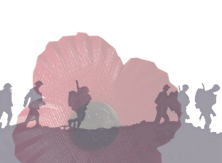Glasgow's War
By the end of the Great War, half of Scotland's male population aged between 18 and 45 years had joined up to go to the front to fight.
By the end of the Great War, half of Scotland's male population aged between 18 and 45 years had joined up to go to the front to fight. Back on the Home Front, 100,000 men were employed in the shipbuilding industry along the Clyde working on the war effort, while a further 20,000 working in Beardmore's Parkhead Forge, the then largest steelworks in Scotland, on munitions.
But with so many men enlisting, women were increasingly needed to replace them across the city from fire houses to trams and shipyards to factories. Indeed in 1915, the first two female tram conductresses in Britain were employed by the Glasgow Corporation Tramways.
Ministry of Munitions figures stated that by 1916, there were 18,500 women working in metal trades in the Clydeside area. By the end of the war the number of women involved in the war industries in Clydeside munitions factories was estimated to be 65,000. During the war, for example, 130 men from the Glasgow Fire Brigade (68% of the service) enlisted. These men were replaced by women taken from local factories who were specially trained at what is now Springburn Fire Station.
While on the trams, it was the women of Glasgow who kept the city mobile.
With so many workers moving to Glasgow to help with the war effort the pressure on housing in the city and rents being increased. Read about 1915 Glasgow Rent Strikes and some of the leading women involved in the campaign Mary Barbour and Helen Crawfurd.
View more fascinating individual accounts of Glasgow's war.





